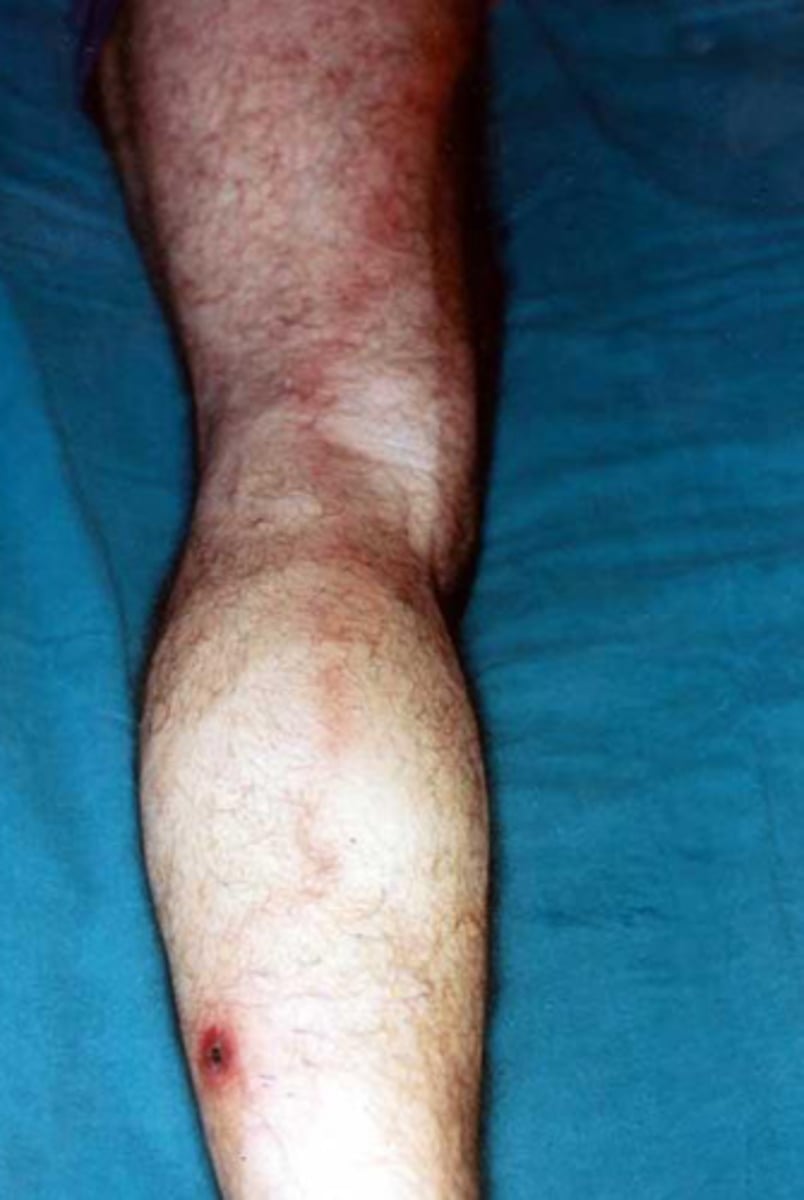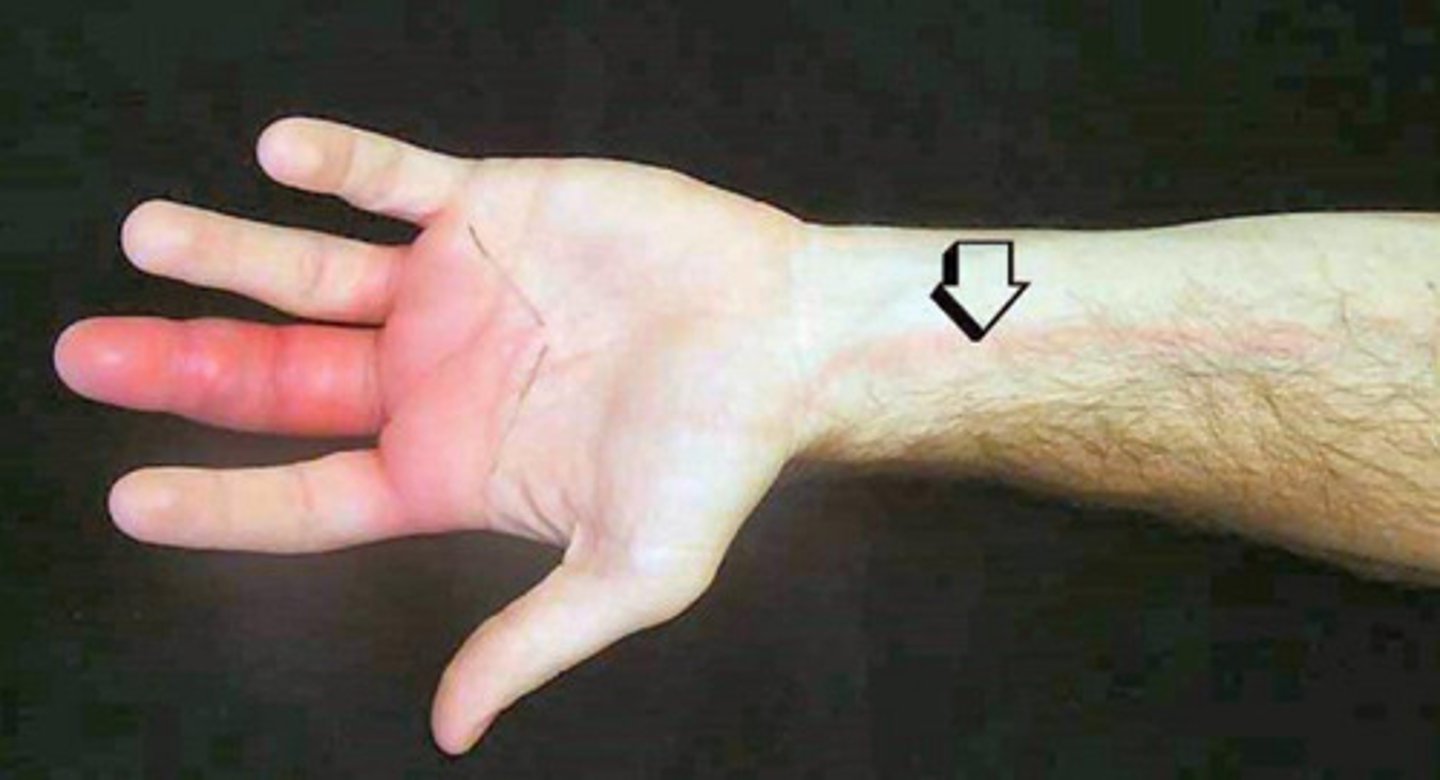Clin Med 1 Infectious Disease 2
1/49
There's no tags or description
Looks like no tags are added yet.
Name | Mastery | Learn | Test | Matching | Spaced |
|---|
No study sessions yet.
50 Terms
Bacteria Pathophysiology
Invasion of tissue
Release Exotoxins and Endotoxins
What are exotoxins?
Poisonous substances secreted by bacteria
What do exotoxins do?
Cell lysis, degradation of extracellular matrix, cell dysfunction
What are endotoxins?
Inflammatory/immune response
Cellular and tissue destruction
Viruses pathophysiology direct pathway
Produces a protein that damages the cell membrane
Virus pathophysiology indirect pathway
Produces a protein that is incorporated into the cell membrane
Immune system mounts a response to this protein
True or False: Sepsis is a syndrome associated with severe infection?
True
Is sepsis a systemic response to infection?
Yes, it enters the bloodstream
How is sepsis caused?
The release of bacterial endotoxins and/or exotoxins
Sepsis triggers the activation of what?
Inflammation cascade, coagulation cascade, complement system
Sepsis cycle
Infection
Bacteremia
Sepsis
Septic Shock
Multi-organ failure
What is the bacteremia stage?
Bacteria in the bloodstream
What is the sepsis stage?
2 or more of:
Temp>100 degrees, <96 degrees
HR>90
RR>20
WBC >12k, <4k
What is the septic shock stage?
Hypotension
Perfusion abnormalities
Altered mental status
What is the multi-organ failure stage?
Failure of the kidneys, lungs, heart, liver, clotting, and CNS
What are the treatments for sepsis?
Treat primary infection
Fluid resuscitation
Medications to vasoconstrict, improve heart function
Treat organ failure
Immune modulators
What is the definition of a pathogen?
The parasite or microorganism responsible for arousing a pathologic response
Ex: bacteria or virus
What is the definition of infectivity?
Pathogen's ability to invade and replicate in a host; how likely is the pathogen to infect someone
Ex: common cold and HIV
What is the definition of pathogenicity?
Ability of organism to cause disease; certain conditions or some disease can happen at any time.
Ex: Epstein-Bar has monolike symptoms (15%)
What is the definition of virulence?
Potency of pathogen and producing severe disease; how bad it will be
Ex: the common cold has a low virulence and Ebola has a high virulence
What is the definition of antigenicity?
The pathogen's ability to stimulate an immune response
Experience condition once (Chicken pox)
Large immune response
Low antigenicity: TB, syphilis, HIV
What is are the sequences of infection?
Transmission
Contact
Airborne
Enteric
Vector-borne
What is contact transmission?
Host is in direct/indirect contact with infection
Ex: touch face w/ disease, common cold lives on surface, touch disease that is on a door knob
What is airborne transmission?
Pathogen is inhaled in through contaminated droplets
Ex: pneumonia, TB, COVID
What is the enteric transmission?
Fecal/oral route
Ex: Underdeveloped countries virus in fecal to oral route
What is the vector-borne transmission?
Indirect, intermediate, insects transmit the disease
Ex: malaria
What is the sequence of infection?
Inoculation/portal of entry
Incubation
Prodromal period
Clinical disease
Convalescence
Recovery
What is the inoculation/portal of entry period?
Pathogen fights past 1st line of defense
Nasal passage
What is the incubation period?
The period of time from when the pathogen enters until symptoms occur
Replication
Host may/not be contagious
What is the prodromal period?
Mild non-specific symptoms
Ex: fatigue
What is the clinical disease period?
Body's response - immune, inflammation
true symptoms
What is the convalescence period?
Resolution - body defeats pathogen
What is recovery?
No longer having the pathogen
What are the symptoms of infection?
Fever, chills, sweating, malaise (general fatigue and feeling ill), nausea, vomiting
What are the symptoms in elderly for infection?
Confusion, memory loss, difficulty concentrating
What are the signs of infection?
Fever, rash, lymphadenopathy (swelling of lymph), and lymphangitis
What is this a picture of?
Lymphangitis

What is this picture of?
Lymphangitis

What is the ancillary testing for infection?
Direct visualization of the organism
Culture and sensitivity
Detection of microbial antigen or antibody
Clues that infection may be present
Detection of specific microbial nucleotide sequences
What is direct visualization of the organism?
Gram staining - finding certain bacteria
Used by sputum or urinalysis
What is the difference between culture and sensitivity?
Culture is different because each bacteria grow differently. Cultures are 24 hours. Sensitivity is 48 hours. Sensitivity is different by seeing how long infected tissue grows, antibiotics are treatments.
What does the detection of microbial antigen or antibody help do?
Identify viral rapid strep test
What clues that infection may be present?
X-ray and WBC in urinalysis
What is the detection of specific microbial nucleotide sequences?
Viral and bacterial infections
How do we treat infection?
Local methods: Heat, incision and drain
Antibiotics - bacterial
Antivirals - viruses
Antifungals - fungals
What are the antibiotic mechanisms?
Destroy the cell wall
Inhibit protein synthesis
Inhibit DNA synthesis
Inhibit RNA synthesis
What does inhibiting the protein synthesis do?
Bacteria can't replicate
What does inhibiting DNA and RNA synthesis do?
Prevent function and replicate
Antiviral medications do what for the body?
Inhibit viral replication
Frequent resistance
Often use multiple medications
What are the preventions for infection?
Handwashing
Disinfecting tables/equipment
Personal protective equipment (PPE)
Vaccinate healthcare workers
Follow isolation procedures
If ill, avoid treating high-risk patients